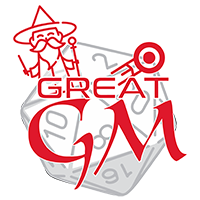Martian
Martians are unanimously a proud people. They are well known for their tight knit family groups and their ferocity as fighters. They are one of the few sapient species that will readily fight with their natural weapons sometimes choosing them over superior constructed weapons. The family groups of Martians are centered around nestmates. Essentially, each group of hatchlings in the same clutch form strong family bonds with one another. These sibling groups will remain together their entire lives. They live together and often work together although not always. Members of the group may take temporary mates during a females breeding cycle but mates always return to their nestmates when the mating is finished. A female's nestmates are responsible for raising the hatchlings and often very little is done by the biological father. Martians are divided into three main ethnicities.
Basic Information
Anatomy
Martians are large humanoid reptiles native to the planet Mars in the Sol system. They typically walk upright but are capable of running or walking on all fours. They have powerful fore and hind limbs with large claws on the end of each digit. They possess a five digit hand with an opposable thumb and a four toed digitigrade foot. Martians also have a large semi prehensile tail that provides balance for quadruped movement and is capable of delivering heavy blows in combat. Some Martians have large dragon-like wings that enable them to fly. Martians have scales covering part of their body mainly the torso and partially extending to the limbs. These scales are durable but are not impervious.
Genetics and Reproduction
Martians are short term monogamists. Females have a once yearly breeding cycle that in past eras were tied to the availability of water. In current time the breeding cycle can be in any season although stress and malnutrition can cause a delay. Females will mate with either a single male or not take a mate although they may choose different males for each season. After breeding the female will lay a clutch of 3-5 eggs after 90 days. As many as 7 eggs are possible but extremely rare. The eggs will hatch after another 60 days. Around 30% of Martians are born with wings. The genetics are slightly recessive meaning that mixed wing clutches are extremely common but 4 or more winged clutches are extremely uncommon. Two wingless parents can have a winged offspring although it is slightly less likely that if at least one parent is winged.
Ecology and Habitats
Martians are found in both the extreme surface desert and the cooler subterranean caves. Tribal Martians are found only on the surface and have mobile communities that travel between the rare desert oasis. Surface Martians form communities around cave entrances and upper caves. They make use of the caves for agriculture and water access but primarily live outside on the surface. Deep Martians live much further down in the subterranean caves and are accustom to the dark more so than other ethnicities.
Additional Information
Facial characteristics
Martians have reptilian heads with small horns on the ridges of the skull.
Geographic Origin and Distribution
Martians are found across the surface and underground of Mars. They congregate in the more hospitable regions but are capable of surviving in the harsher deserts with proper preparation.
Average Intelligence
Martians have a similar intelligence range as humans. In general Martians tend to be at least moderately intelligent and higher intelligence is extremely common. This makes interspecies interaction somewhat smoother due to the lack of intellectual disparity. The harsher environment on Mars compared to Earth means that natural selection favors intelligence more resulting it the skew toward higher intelligence.
Perception and Sensory Capabilities
Martians have an excellent sense of smell that can be further augmented by opening their mouths or flicking their tongues. Their hearing is very acute. Due to their leathery skin they have a limited sense of touch but are very sensitive to vibrations. Martians have similar vision capabilities to humans although their night vision is significantly better. Due to their origin on a desert planet Martians are very sensitive to humidity allowing them to locate sources of water by tasting the air.
Civilization and Culture
Common Taboos
Using poison even on one's weapons is considered highly dishonorable and individuals who make use of poisons are often scorned.
Interspecies Relations and Assumptions
Mars has traditionally been isolationist. As of [insert date] Mars has had limited contact with its only neighbor Earth due to the incident involving Tershey and [insert group when made].
Lifespan
100 years
Average Height
8-10ft
Average Weight
600-800lbs
Average Physique
As an aggressive warrior centric race Martians tend to be very strong and fast. Even non warriors are extremely dangerous. The social elite and rulers on Mars are often among the strongest and well trained. Martian culture places a high emphasis on physical capability.
Body Tint, Colouring and Marking
Martians have a thick leathery skin. They possess patches of scales down their backs continuing onto the tail as well as scales on the outside of the forearms and hindlimbs. Their coloring is usually shades of red and brown ranging from deeper to medium shades. Lightly colored Martians are rare but do exist. Martians are usually lighter on the underbelly and some may have stripes or blotches. These markings are usually very similar in shade to the base coloring and are often difficult to discern.
Geographic Distribution
Related Ethnicities
Related Myths
Remove these ads. Join the Worldbuilders Guild









Comments